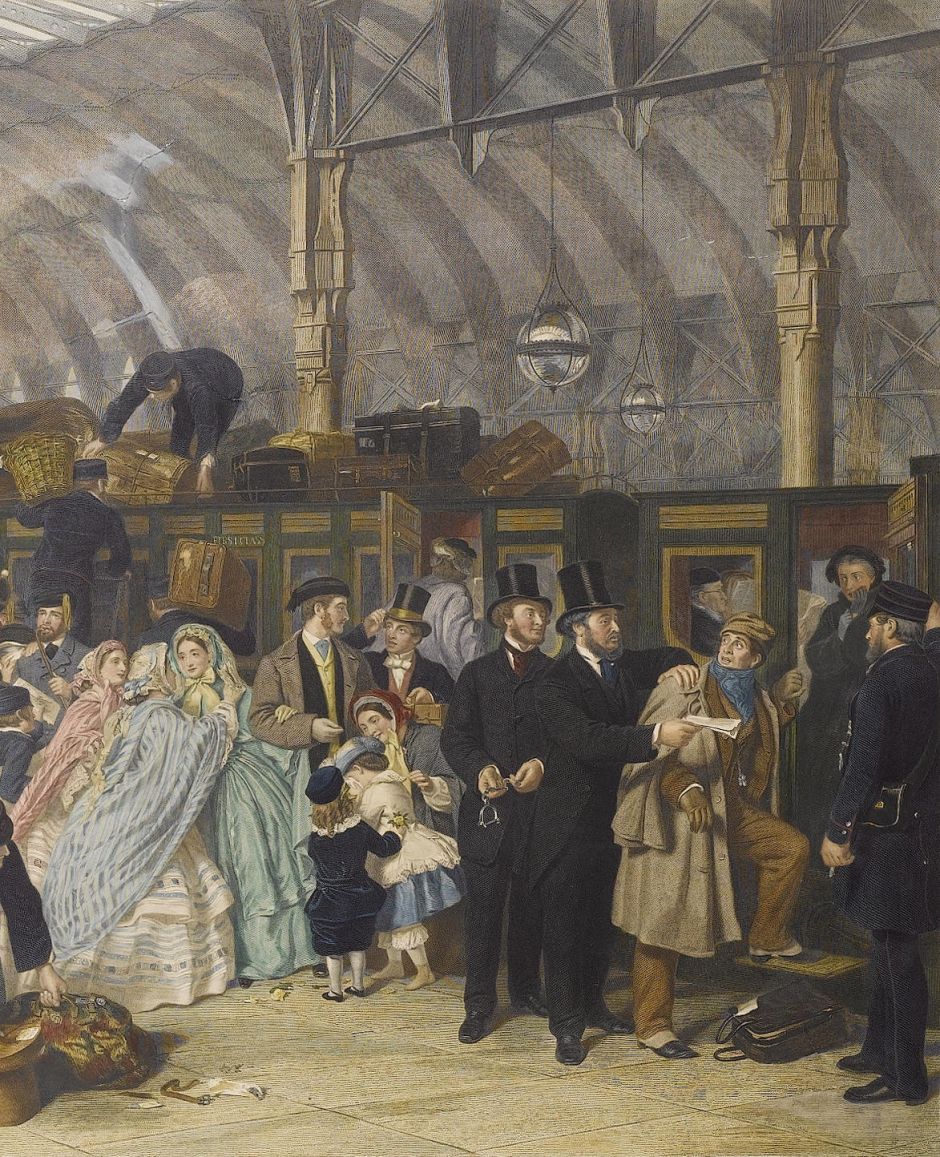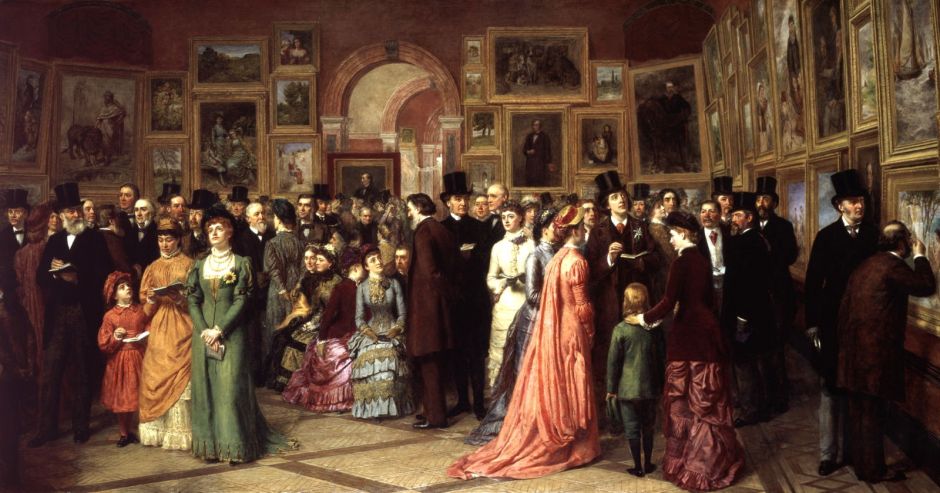In the previous article in this series, I looked at the first human panoramas painted by William Powell Frith (1819–1909), but stopped short of the painting which many think is his greatest.

With the success of his two earlier human panoramas showing Ramsgate Sands (1854) and The Derby Day (1856-58) (above), Frith set to work on his greatest painting, a similar human panorama showing the interior of one of London’s major railway stations. Sadly, as the original is now in the Royal Holloway, University of London, and a smaller copy is in the Royal Collection, usable images of them aren’t available.
The best image that I can find of this major piece of Victorian art is a print engraved by Francis Holl, working for Henry Graves & Co, who bought the painting for over £16,000. Frith himself had been paid over £5,000 by the dealer who commissioned it, and that dealer made a handsome profit when he sold it on for Holl’s prints.

The Railway Station (1862) is set in the crowded and busy Paddington railway station in London. Frith was not only thoroughly modern and commercial in its exhibition – it wasn’t shown at the Royal Academy, but in a private gallery which charged one shilling (£0.05) per visit – but he used photographs in its execution. It’s rich with little social vignettes, and among its many faces are associates and friends of the artist, including the dealer who paid for it.
Paddington Station, completed a decade earlier, had been built by the great Victorian engineer Isambard Kingdom Brunel. It was a cutting-edge building, constructed from cast iron and glass and lit by gaslight. It was the London terminus of the Great Western Railway, with trains running to Bristol, Cardiff, Exeter, Plymouth and the West Country.
The scene shown takes place on the platform, where a large and disparate group of people are assembled preparing to board the train.

At the left, Frith shows one of the early steam locomotives, with its open cab and pile of coal. A railway porter is pushing a large barrow piled high with trunks and boxes to be loaded onto the train. Above them are the cast iron arches of its vaulted glass roof, from which thoroughly modern gaslights are suspended.

In the foreground is a group consisting of Frith and his family, with his wife kissing the couple’s younger son goodbye (at the left of this detail). The boy clutches a cricket bat so is presumably off to school for the summer term. Frith and his elder son stand behind. Beside them is a bearded man in a fur coat, modelled on a refugee Venetian nobleman, who had given lessons in Italian to Frith’s daughters. He is arguing over his cab fare. Then comes a bride, bridegroom and two bridesmaids.
Behind them more porters are stowing luggage on the roof of a carriage, where it will be covered by a heavy tarpaulin for the journey.

The centre of action is at the right of the painting, where an arrest is being made. A man dressed in brown clothes is about to board the train, within which a woman stares aghast at the scene. Two Scotland Yard detectives, complete with top hats, are in the process of serving him a warrant for his arrest, the other stood ready with a pair of handcuffs. At the far right is the train’s guard, who is holding the carriage door open.
The policemen were modelled by the artists John Brett and Benjamin Robert Haydon, who were re-enacting a well-known story at the time. We don’t know what event has preceded or precipitated this arrest, nor do we have any inkling as to whether the alleged criminal will try to run off, or be taken into custody. Much as in later ‘problem pictures’, the viewer is left to endless speculation and absorption.

Frith’s last great human panorama is A Private View at the Royal Academy, which he completed in 1883. Although he was a Fellow from 1853 until his retirement in 1890, his can’t have been an easy relationship with the British art establishment. This work gives some insight into the frictions within the Academy, as Oscar Wilde is seen at the right holding forth about art, to the dismay of Frith’s friends nearby. Frith had opposed the Pre-Raphaelite and Aesthetic movements, and, like Frederic, Lord Leighton (also shown in this painting), was a great traditionalist.
I doubt whether Frith’s painting was even at the back of Monet’s mind when he started painting his series of seven views of the interior of Gare Saint-Lazare in 1877. However, The Railway Station is echoed by a work showing Sacramento station in California.

William Hahn’s Southern Pacific R.R. Station at Sacramento from about 1873-4 gives us a small glimpse of a human panorama from the other side of the world.

